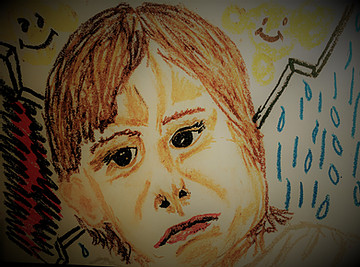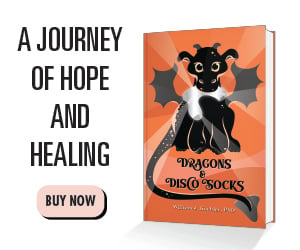In the past two weeks I’ve shared 4 of the questions I’ve most frequently been asked about #EMDR. This week, I discuss what almost everyone considering EMDR treatment wants to know: How long will this take, exactly?
A Long and Treacherous Road
Our lives are anything but straightforward. We set out on a path with every intention of arriving safely at our destination, only to find we are waylaid by thieves, betrayed by loved-ones, or fallen prey to unexpected circumstances. Most of us end up somewhere close to where we wanted, but this isn’t guaranteed. When we do arrive, we are often sore, beaten down by the journey, weary and worn from the trials and traps we’ve overcome.
Sometimes, It’s As the Crow Flies
When someone comes in seeking help recovering from their past, it’s usually for a specific reason. That reason is hardly ever simple. It is also hardly ever what really needs addressing either. Getting down to the root of a problem is not as easy as cutting it off at the surface. It’s true, some trauma symptoms have a direct path – “I’m too anxious to drive because I was in a car accident 6 months ago” or “I’m afraid to be in my home alone because I was robbed last year.” “I find it difficult to have meaningful, intimate relationships as an adult but I don’t know why,” on the other hand, not so much.
Regardless of the symptoms bringing you to the point of seeking relief, I don’t know of anyone who wants to take the long way around. You are hurting, you want relief, not a leisurely stroll down memory lane recounting the ‘bad old days.’
But Why EMDR anyway?
This certainly isn’t a magic bullet, able to defeat every monster lurking around in your past, but there are a couple of reasons it might be the best way to quickly experience healing.
1. You don’t have to do a lot of talking.In fact, you don’t have to tell me anything if you don’t want to. It’s perfectly okay for a person who I’m helping reprocess a memory to tell me nothing about what they are thinking, feeling, remembering. Here’s an example:
Therapist: (stops the bilateral stimulator) “Take a deep breath. Now, let it go. So, what did you notice?”
Client: (who has been sitting with eyes closed, crying) “Um… I guess just awful stuff.”
Therapist: “Okay, so, you are remembering parts of this past event and you’re upset because of them?”
Client: “Yeah…” (grabs a tissue)
Therapist: “Okay, this is just your body reprocessing some painful stuff. I’m going to turn the tappers back on again. Keep processing where you left off for a little bit longer. Let me know if it’s too overwhelming and I will stop. Okay?”
Client: (nods)
Therapist: (turns the bilateral stimulator on)
Usually there is a bit more dialog between the 45-90 second sessions of bilateral stimulation, but with EMDR, you are actually healing when you are taking ‘bites’ out of the overwhelming memory rather than when you are talking with me about it. My job is to make sure you don’t take too big of a bite.
2. EMDR helps you much more quickly and thoroughly than some other, more direct methods. The difference I see in my own life, with my clients, and from many studies I’ve read on EMDR effectiveness consistently demonstrate how people experience major shifts in their lives even after a few EMDR sessions. Of course, it isn’t as easy as I thought when I first saw my therapist, Rochelle. I had naively wished I would go into her office, she would “EMDR” me a couple of times, and I would be over my most recent break-up and able to experience intimacy again. She gently helped me understand how it really works during our first session: First, I had to prepare myself by learning how to be grounded when I was triggered. Then we needed to draw-up a map of where we were going. [Next week I’ll talk more about other tools you’ll need to help you start your own quest to find healing.]

Even though I was impatient with her, wanting to get to my current problem, these tools have proven invaluable in my everyday life. Finally, after 4-5 sessions of preparation, Rochelle confidently led me into the heart of what was really wrong, by starting from the actual beginning. Remarkably, I began to experience my life in noticeably different ways after 2-3 sessions. I had not realized how profoundly my past experiences were impacting me in the here and now.
‘I guess sometimes you need to learn to see the cracks in your mirror before you can begin to repair them.’
In short, even though it seems like the long way around EMDR helps you experience change almost immediately. This is because it not only helps you think differently about your past, it helps you experience it differently in your body, and feel differently about what happened.
For the past 3 weeks I’ve shared with you 5 of the questions I often get asked about healing from your past through a process called Eye-Movement Desensitization and Reprocessing (EMDR). While there is still some distance left for me to go, I have experienced considerable healing through this process. While there is still a lot to learn, I have been honored to help people shift their perspective about themselves and their place in this world in relatively short timeframes. And finally, while you still may have questions, I hope these past few entries have encouraged you and given you hope in your own journey. Please reach out and let me know if you’ve found these posts to be helpful: WillKoehlerLCSW@atraumainformedlife.com and/or www.ATraumaInformedLife.com







